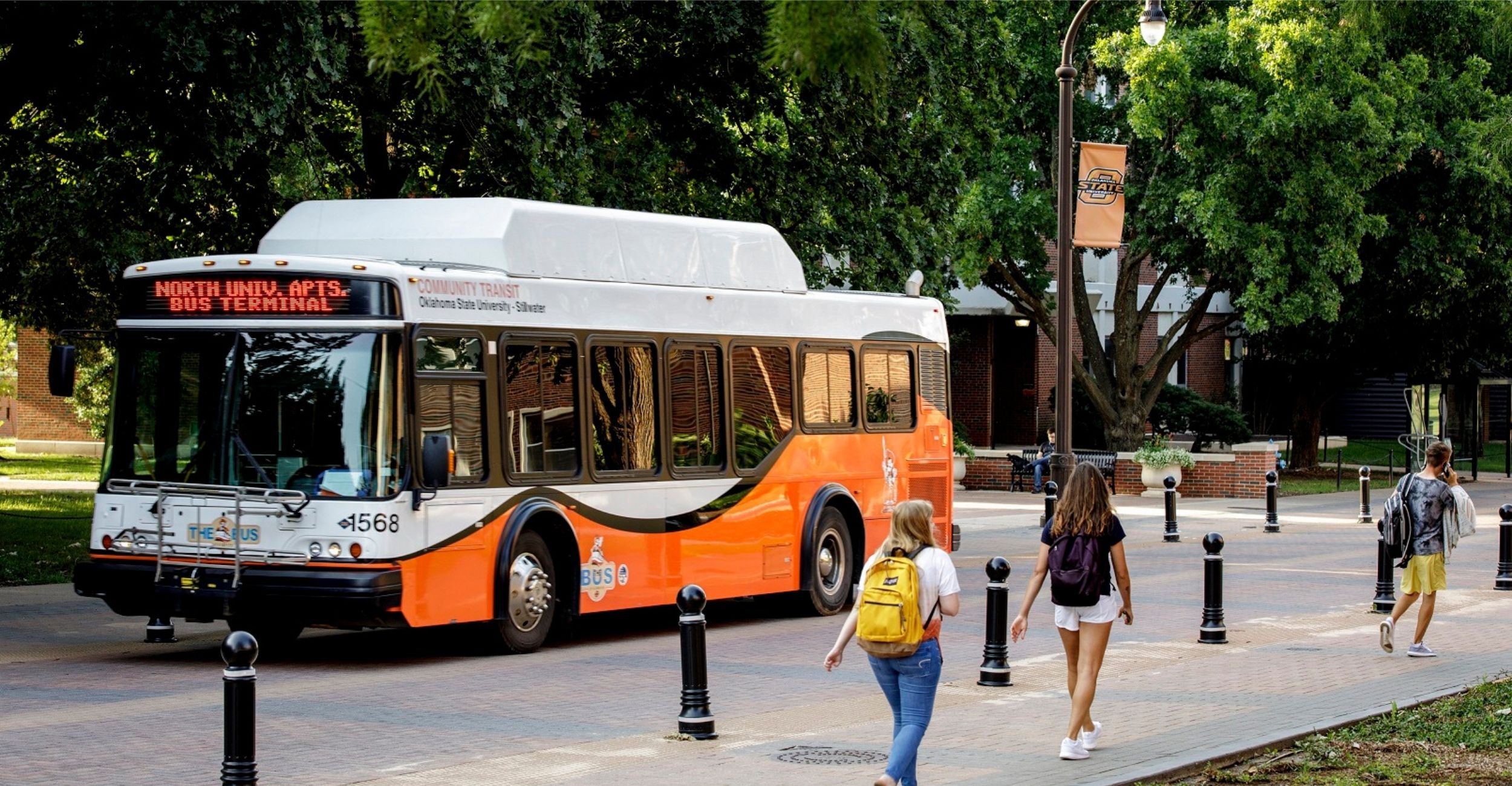
How parking and transportation services helps with OSU's sustainability mission
Monday, April 26, 2021
Media Contact: Lyn Putnam | Communications Specialist | 405-744-5496 | lyn.putnam@okstate.edu
For universities, transportation is crucial, but it can also be extremely inefficient and damaging if the administration does not focus on sustainability as a mission.
Because of this, the Department of Parking and Transportation Services has spent many years developing a system of transportation that is both efficient and sustainable.
In 2021, Oklahoma State University placed sixth in the United States on the Times Higher Education IMPACT Ranking in the category of ‘Sustainable Cities and Communities’, and placed sixth in the US in the category of ‘Affordable and Clean Energy’. The years of work that DP&TS has put into transportation on campus have helped OSU to achieve this ranking.
The first big step that the Department of Parking and Transportation Services took to become more sustainable was changing the diesel-chugging bus system to a fleet that uses compressed natural gas, or CNG. CNG burns cleaner than gasoline and diesel and releases less carbon dioxide per unit of energy provided, according to the federal Energy Information Administration.
“The diesel buses were not just an emissions problem, but a noise pollution problem as well,” Director of DP&TS Steven Spradling said. “We were glad to start phasing them out.”
Compressed natural gas vehicles have a few issues that will probably keep them from mass-adoption among everyday drivers, including much larger fuel tanks and less range, but the size and space that buses have access to makes them an ideal place to use the cleaner-burning fuel.
“I think using CNG is a good intermediary step in reducing emissions and moving towards a carbon neutral future,” Spradling said.
More recently, DP&TS has worked to incentivize students and university employees to reduce emissions with an online carpool program that connects people who want to save on gasoline costs. The Department of Parking and Transportation Services has also started building electric scooter/motorcycle parking spots closer to buildings so that people will be more likely to take vehicles that use less gasoline.
In 2019, DP&TS made a deal with electric scooter operator Spin to start providing scooters to cut down on both traffic and gasoline usage for people traveling around campus. The scooters provide a fast way to get across campus on an electric vehicle and have reduced congestion on many small roads on campus.
In the future, DP&TS hopes to use a method of renewable natural gas to power its bus system. Because methane can be converted into CNG, and farm animals like pigs and cows are hefty producers, they can provide fuel to the buses, creating a totally renewable transportation ecosystem. As a land-grant university, OSU has access to quite a few farm animals, but it is also possible to use landfills as a fuel source for CNG.
“OSU students have a lot to look forward to in regard to transportation and sustainability,” Spradling said. “We will keep pushing to implement more efficient and eco-friendly transportation, and we are always looking forward to new technological ideas.”
Story by Zach Kluver
